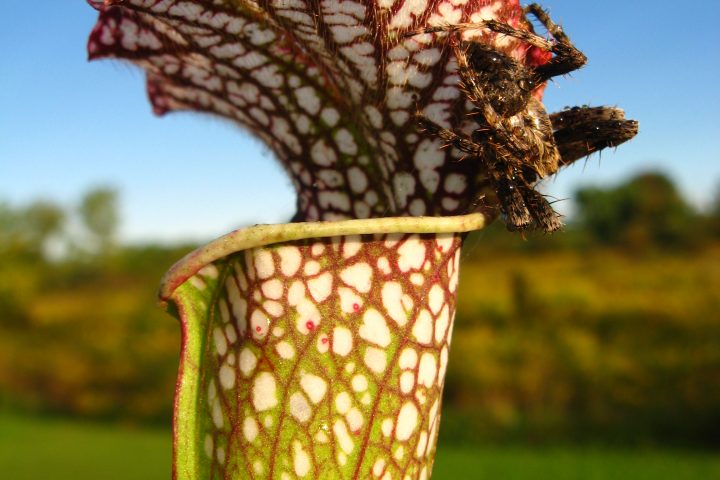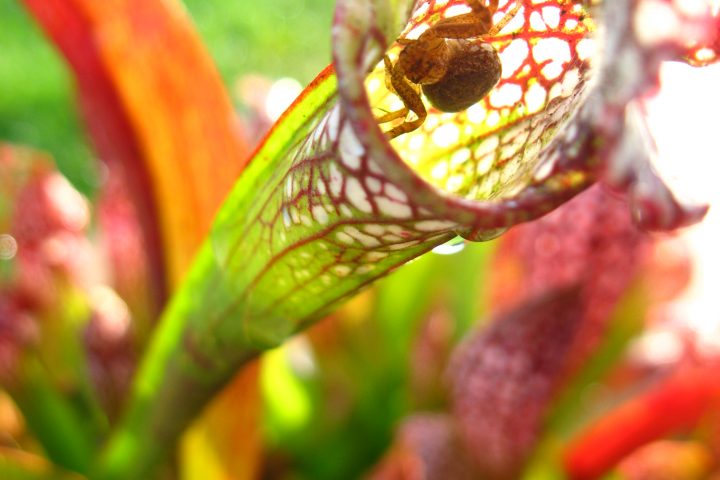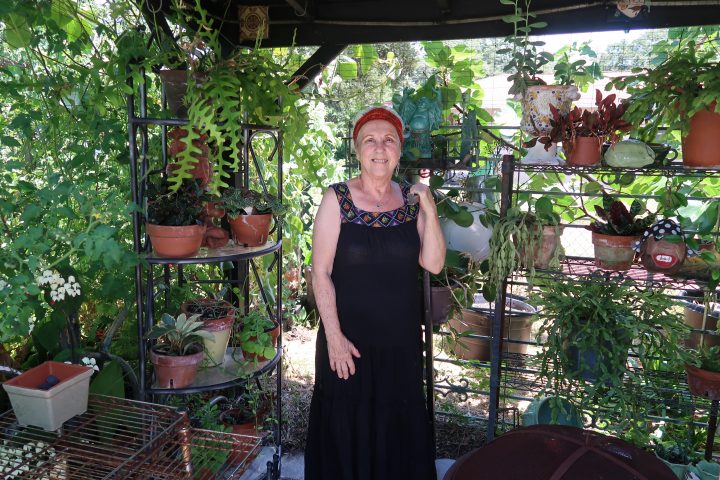I love many things in life and two of those things are my cats, Julian and Princeton. No matter the external or internal factors that affect my mood my cats can always give me a boost. Not only can they make me laugh out loud but they also may be able to better my health. Some research has shown caring for a cat can reduce stress, risk of stroke, anxiety, depression and lower cholesterol and triglycerides.
Something else that I am very passionate for is gardening. There are not too many other hobbies that directly impact your health as powerfully as gardening – and the benefits reach beyond growing your own food. Vegetable growing encourages healthier eating habits and gardening in general also improves your mood, may lower osteoporosis and diabetes risk and can lead to better sleep patterns. According to a 2014 study getting your hands dirty in the garden can also give your immune system a boost.
If caring for cats and gardening both bring me benefits can I combine the two into one super beneficial hobby?
Gardening with cats
Regardless if you personally care for a cat or not, chances are that a cat will cross your garden path. Several years ago the American Feral Cat Coalition estimates that there are approximately 60 million feral and homeless stray cats living in the U.S.
According to the Florida Fish and Wildlife Conservation Commission there are over 77 million pet cats nationwide. Of these, about 56% or 43 million cats spend some time outside. That’s over 100 million cats living outside! Cats are becoming a common feature not only of our city streets and parks but also our landscaped backyards.
After speaking with many gardeners I could not find too many that said that there was a direct benefit for having cats in the garden. One told me that he had moved his cat’s food bowl and litter pan closer to a fruit producing tree to deter the squirrels and other wildlife from eating his crop.
Some gardeners believe that outdoor cats receive more exercise, maintain a healthier weight and benefit from the stimulation from the outside world.
Pat O’Shea, a Master Gardener since 1999, currently cares for four felines. In 2007 she started, Kitten Sittin’, a home pet sitting business.
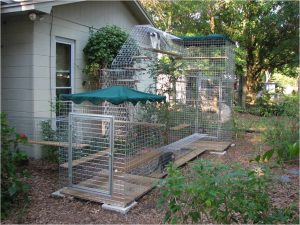
When O’Shea gardens she lets out two of her cats to join her, Smokey and Princess. “I have my eyes on them at all times and they do not leave my yard,” she says. She even takes Smokey for walks around the yard. “I have a harness and a leash and he loves smelling the bushes,” she adds.
O’Shea says if you are lucky enough to have an enclosed pool or lanai the cats would appreciate the fresh air and sunshine. She concludes that since she doesn’t have any kids to send through college she has built her cats an elaborate outdoor Cat Condo, which keeps them and her backyard wildlife safe.
The American Association of Feline Practitioners (AAFP) says if you are going to garden with your cats you should first, ensure that your cat has been seen by a veterinarian and you have discussed their individual healthcare plan including outdoor access. Like O’Shea the AAFP recommends that you supervise your cat when outdoors. They also urge cat owners to bring their cats in once a year for a veterinary check-up and apply the proper vaccinations and parasite screenings and prevention. Cats that have a microchip and collar with a tag are much more likely to be reunited with their family if they were to be frightened and become lost.
Gardening without cats
For many cat owners, like myself, the dangers of having a cat outside outweigh the benefits. In addition to parasites, cats can be injured from a wide range of external factors such as vehicles, domestic and wild animals and toxic plants.
Occasionally a feral or neighborhood cat can turn from a feline friend to a fecal felon. If you have a cat that is using your beds as a litter pan there are a few solutions, although felines are territorial and it can be hard to break the pattern.
Decomposing mulch is great for plants; however it is also a kitty litter invitation. Cats prefer sandy or rich humus soil to dig through, prior to going the bathroom. If cats frequent a certain area, you can purchase cat specific products that have tiny triangles protruding upwards which supposedly deter the cats due to the uncomfortable feeling on their paws. This can become expensive and unless a large area is covered the cats may just move to the adjacent location that doesn’t have this product.
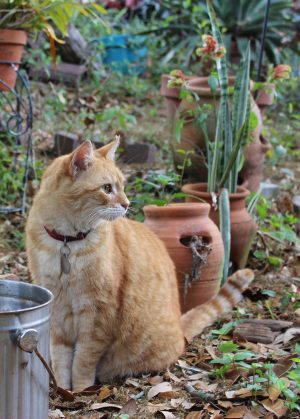
Bird netting and chicken wire are less expensive alternatives. To use bird netting lay it on top of the mulch. When the cat comes up to scratch, the mesh prevents them from digging down and the cat will likely move on. Chicken wire is heavy duty and can be covered with mulch to make it visually pleasing. Cut pieces so they fit snuggly up to your plants. This also works for dogs as well.
Underneath decks are great places for cats to hide for protection and to access soft dirt. Although scents that deter such as black pepper oil are only marginally effective, especially after a rain, when placed under a deck they will not have to be replaced as frequently. If the cat problem is happening in your vegetable garden you will not want to use store bought oil. Placing peels of citrus fruit, placed every few inches will help deter cats due to the smell. It will eventually break down into the ground, giving nutrients to the soil, but also will need to be replaced.
White vinegar can also be used as an invisible border deterrent, though you will not want to use it near plants. A new application will need to be applied after each rain, and the good news is that vinegar is inexpensive. Potent plants such as rue (Ruta graveolen) and Coleus canina, also known as “scaredy cat plant,” may also help deter cats. Lavender, pennyroyal, geranium, and lemon thyme can also be grown as borders to keep cats away.
“With modern technology, you could also consider motion detectors that make a noise, produce a light, or set off a sprinkler or water spray action,” Dr. Marcus Brown, DVM, the president of AAFP says.
He adds, “Fencing in your gardens can be very helpful to keep all unwanted visitors out including dogs, cats, rabbits, rodents, raccoons, and deer.”
Gardening for cats
Although some cat caregivers may not give access to the outdoors, that doesn’t mean we can’t designate an area of our garden for them.
“Catnip is a great herb to grow in your garden and bring it in to share with your cats. There are many plants that are toxic to cats so be sure to check-out which ones are safe,” Dr. Brown says.
Here are the top ten herbs that you can grow for your cats.
|
Helpful Herbs |
||
| Common name | Scientific name | Effect |
| Cat Thyme | Teucrium marum | Will elicit euphoric sensation similar to catnip, for cats who don’t respond particularly strong to catnip |
| Catnip, catswort or catmint | Nepeta sp. | Relives stress and nervousness. Catnip baths can soothe itchy skin. Repels mosquitoes and flies. |
| Cat’s claw, Dandelion root | Uncaria tomentosa and genus Taraxacum | Benefits humans and cats. Contains natural cortisone which will help with allergies. |
| Chamomile, Calendula, Echinacea | Asteraceae family | Medicinal properties include reducing skin problems such as itching. Some veterinary herbalists use them as a tincture. |
| Goldenseal | Hydrastis canadensis | Natural disinfectant can help with infections or allergies. |
| Licorice root | Glycyrrhiza glabra | Benefits humans, dogs and cats. Can soothe allergies and help endocrine and digestive problems. May help with arthritis as it has anti-inflammatory properties. |
| Valerian | Valeriana officinalis | Strong smelling herb is known to relax humans and stimulate cats. Herb energizes slow, lethargic cats into fast furry felines. |
Cat caring and gardening will always bring me joy, but for now I will keep the two interests separate. If my cats are going to enjoy my plants from my garden they will do so indoors. Do you have a positive story to share on how your outdoor cat helps around the garden?
Originally published in Florida Gardening May/June 2015 issue.

